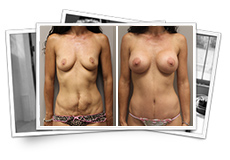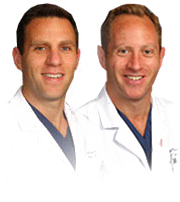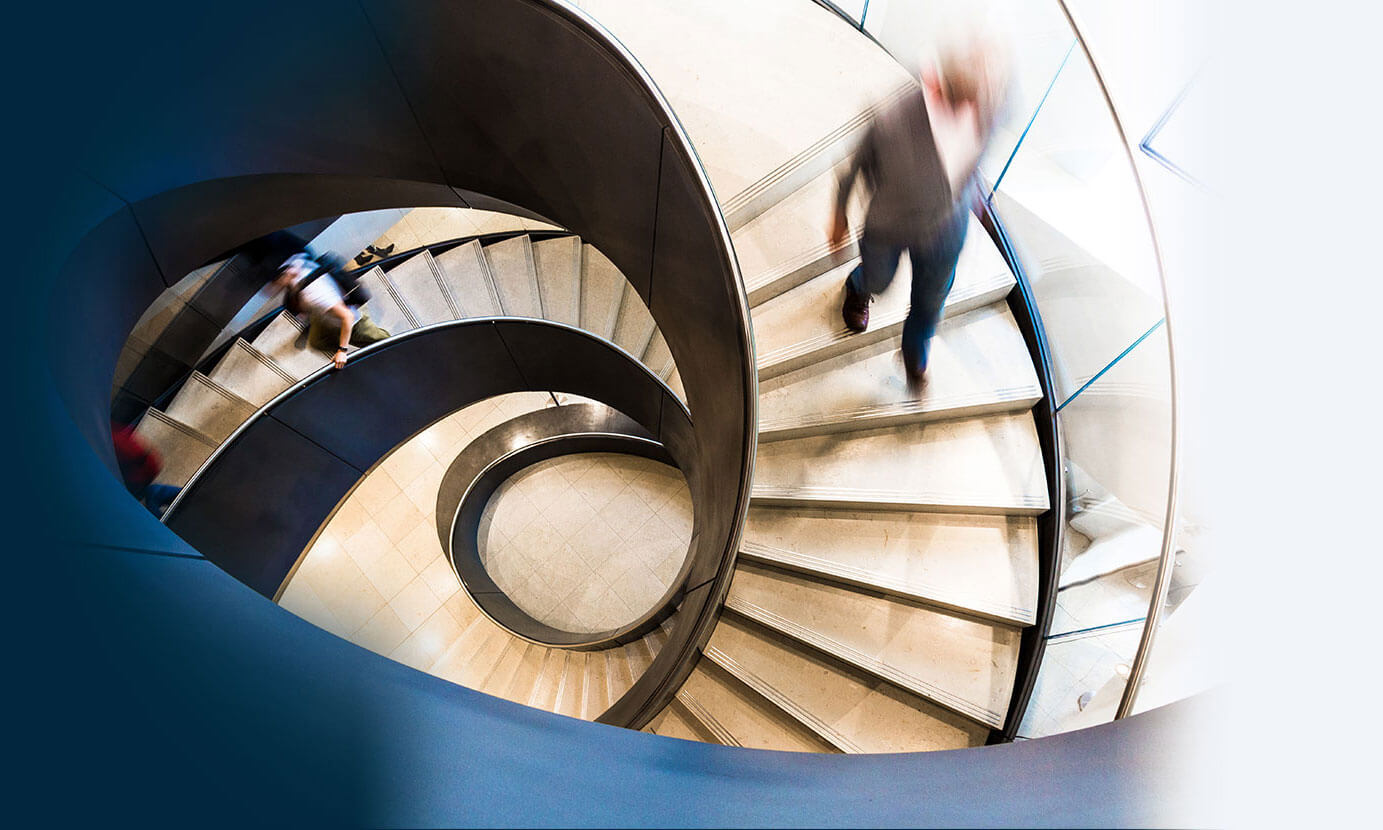Mommy Makeover Thousand Oaks
The Mommy Makeover procedure is essentially a combination of two procedures that address the changes that can occur during pregnancy. The two areas of the body that are most affected during pregnancy are the abdominal area and the breasts. The abdomen is typically stretched out leaving you with redundant skin, separation of the abdominal muscles and sometimes even a hernia, and the breasts are typically affected by becoming smaller than they were and/or more saggy.
Before & After Photos
 Mommy Makeover
Mommy Makeover
At the Kryger Institute of Plastic Surgery, we have experience in a vast array of surgical and non-surgical procedures. Click below to see some before and after photos of mommy makeovers.
The procedures that we perform in a Mommy Makeover include a Tummy Tuck that tightens up the abdomen and removes excess skin and some type of breast enhancement. In some cases this is a breast augmentation in others, a lift and in some cases it is a combination of a lift and an augmentation.
The procedures are combined and performed simultaneously. At the Kryger Institute of Plastic Surgery, we have two board-certified plastic surgeons that perform the procedures at the same time. This minimizes the length of time that the operation takes and therefore decreases both the risks as well as the cost of the procedures.
Who is a good candidate for a mommy makeover?
Women who have the mommy makeover have completed having children and have lost all of the baby weight and returned to their pre-pregnancy weight. If you are still thinking about having more kids, the procedure should be delayed until after you’re finished having children.
Does insurance cover mommy makeover surgery?
Because most insurance companies do not consider the mommy makeover to be medically necessary, carriers generally do not cover the cost of this procedure. It is important that you discuss all the costs and fees during your consultation. One benefit of the mommy makeover is that since it combines two procedures, the total cost is much less then the cost would be from having the two procedures separately performed. Therefore, if you are considering having one of these procedures, you should also think about performing the second operation at the same time as this will be better from both a financial standpoint as well as a recovery standpoint. For young moms, it is hard enough to take time off and get extra help, let alone doing that twice.
Anesthesia during a mommy makeover
A mommy makeover can be performed under “twilight” anesthesia or general anesthesia. Twilight anesthesia consists of intravenous sedation and pain medication that keeps you relaxed and sleepy during the surgery. In addition, the surgeon uses local anesthesia to numb the abdomen. General anesthesia involves going completely to sleep with a breathing tube in your throat. There is a slightly higher risk of nausea and vomiting after general anesthesia, however both techniques are extremely safe. Your surgeon will discuss the anesthetic options with you before surgery.
Recovery from mommy makeover
The recovery from a mommy makeover is essentially the same as the recovery from the two individual components of the operation. However, when a patient recovers from two simultaneous operations, it is a much easier recovery than recovering from two operations that are performed at different times. In other words, having a Tummy Tuck and going through the recovery and then having a second breast surgery and going through the recovery is much more difficult than recovering from both procedures simultaneously.
How much pain is there after surgery?
Pain from mommy makeover surgery is highly variable, and ranges from minimal to severe. It is worst in the first few days after surgery, but then it rapidly improves. It is impossible to predict a person’s expected pain. If you have done well with surgery in the past, you will likely be fine after this surgery. Our surgeons have a lot of experience treating pain, and have published scientific articles and written book chapters about anesthetics and pain control. They will do everything possible to minimize your pain, including using pain pumps after surgery and utilizing all the newest pain medication. By the end of the first week, most people’s pain is controlled with plain Tylenol or Motrin.
What about swelling and bruising?
Swelling and bruising are normal signs of the healing process. They occur after any surgery to varying degrees. Swelling peaks at about 48 hours, and then rapidly decreases. By the end of the first few weeks, 50% of the swelling is gone. By 6-8 weeks, a majority of the swelling has diminished. By six months, almost all the swelling is gone. Any remaining swelling is almost not perceptible. Bruising is worst the day after surgery and then rapidly gets better. It is usually gone by two weeks.
What restrictions are there?
You can shower the day after surgery, but you should not take a bath, use a hot-tub, or go swimming for at least two weeks. The first two days after surgery are usually spent lying in bed or sitting in a chair. Most patients then begin walking around the house. Climbing stairs is difficult in the first few days after surgery, but becomes more manageable within days. By the end of the first week, you will probably be ready to leave the house for short trips and light walks. More vigorous walking and mild stretching exercises can be resumed about two weeks after surgery. Strenuous activities such as jogging, aerobics, weight-training, sit-ups, and sex should not be done until 6 weeks after surgery. Also, you shouldn’t do any heavy lifting (over 10 pounds) during these 6 weeks.
When can I travel?
Traveling after surgery (air travel, long distance car trips, train rides, etc) should not be done before the drains are removed and you have had your first postoperative visit. Typically, this occurs 5-7 days after surgery. Patients who are at high risk for developing a blood clot should not travel until instructed by their surgeon. Short car trips under 60 minutes can be done before the first visit. A good rule of thumb is when you are off the stronger pain medication and can get up without assistance you are ready to go for a short drive. You should not drive the car yourself, however, until your surgeon gives you clearance for this.
What if I have a problem? When should I call the office?
The Kryger Institute welcomes calls from patients. If you have any concerns at any time, please feel free to call our office. If it is an emergency, the answering service is available 24 hours a day, including weekends and holidays. There is always a plastic surgeon on call. Your surgeon will discuss all the risks and potential complications with you before surgery. You will receive detailed instructions about situations that warrant a call to the office.
Meet Our Surgeons
 Our surgeons have over a decade of experience in Plastic & Reconstructive Surgery, and have a record of exceptional results. Learn more about our surgeons or request a consultation.
Our surgeons have over a decade of experience in Plastic & Reconstructive Surgery, and have a record of exceptional results. Learn more about our surgeons or request a consultation.

